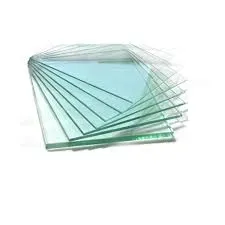Understanding Different Types of Tempered Glass
Tempered glass, known for its strength and safety features, has become a popular choice in various applications, ranging from architectural designs to automotive industries. Unlike regular glass, which can shatter dangerously upon impact, tempered glass is processed through controlled thermal or chemical treatments to increase its strength. This article explores the different types of tempered glass, highlighting their unique characteristics and applications.
1. Standard Tempered Glass
The most common type of tempered glass is the standard tempered glass, often used in residential and commercial buildings. It is produced by heating the glass to over 600 degrees Celsius and then rapidly cooling it. This process creates a high surface compressive stress, making it significantly stronger than regular glass. Standard tempered glass is ideal for windows, doors, and glass facades due to its ability to withstand both thermal stress and impact.
2. Laminated Tempered Glass
Laminated tempered glass consists of two or more layers of tempered glass bonded together with a durable interlayer, typically made of polyvinyl butyral (PVB). This type of glass not only maintains the strength of tempered glass but also enhances safety. In case of breakage, the interlayer holds the fragments together, reducing the risk of injury from flying shards. Laminated tempered glass is commonly used in skylights, shower enclosures, and glass doors, where safety and sound insulation are priorities.
3. Heat-Strengthened Glass
different types of tempered glass
Heat-strengthened glass is often confused with tempered glass, but it is not as strong. It undergoes a similar heating process, though it is cooled more slowly than tempered glass. This results in a glass that is strong but exhibits less compressive stress. Heat-strengthened glass is commonly used in applications that endure significant thermal fluctuations, such as curtain walls and large window frames. It provides an excellent balance between safety and thermal resistance.
4. Ceramic-Fused Tempered Glass
Ceramic-fused tempered glass is specially designed for high-temperature applications, such as fireplace doors and stoves. This type of glass can withstand extreme heat without breaking, making it ideal for environments where direct flame exposure is common. It offers the added benefit of clarity, allowing for the visibility of flames while maintaining safety.
5. Tinted Tempered Glass
For applications that require glare reduction or privacy, tinted tempered glass is an excellent option. This glass is infused with color during its manufacturing process, providing varying levels of light transmission and heat absorption. Tinted tempered glass is commonly used in commercial buildings, automobiles, and residential homes to enhance energy efficiency and aesthetics.
Conclusion
The various types of tempered glass cater to a wide range of needs across multiple industries. From the strength and safety of standard tempered glass to the specialized functionality of ceramic-fused and laminated options, it’s essential to choose the right type for specific applications. As technology advances, tempered glass continues to evolve, offering enhanced performance, safety, and aesthetic appeal in modern constructions. Whether for architectural, automotive, or functional purposes, understanding the different types of tempered glass ensures you make informed decisions that align with safety standards and design needs.
 Afrikaans
Afrikaans  Albanian
Albanian  Amharic
Amharic  Arabic
Arabic  Armenian
Armenian  Azerbaijani
Azerbaijani  Basque
Basque  Belarusian
Belarusian  Bengali
Bengali  Bosnian
Bosnian  Bulgarian
Bulgarian  Catalan
Catalan  Cebuano
Cebuano  Corsican
Corsican  Croatian
Croatian  Czech
Czech  Danish
Danish  Dutch
Dutch  English
English  Esperanto
Esperanto  Estonian
Estonian  Finnish
Finnish  French
French  Frisian
Frisian  Galician
Galician  Georgian
Georgian  German
German  Greek
Greek  Gujarati
Gujarati  Haitian Creole
Haitian Creole  hausa
hausa  hawaiian
hawaiian  Hebrew
Hebrew  Hindi
Hindi  Miao
Miao  Hungarian
Hungarian  Icelandic
Icelandic  igbo
igbo  Indonesian
Indonesian  irish
irish  Italian
Italian  Japanese
Japanese  Javanese
Javanese  Kannada
Kannada  kazakh
kazakh  Khmer
Khmer  Rwandese
Rwandese  Korean
Korean  Kurdish
Kurdish  Kyrgyz
Kyrgyz  Lao
Lao  Latin
Latin  Latvian
Latvian  Lithuanian
Lithuanian  Luxembourgish
Luxembourgish  Macedonian
Macedonian  Malgashi
Malgashi  Malay
Malay  Malayalam
Malayalam  Maltese
Maltese  Maori
Maori  Marathi
Marathi  Mongolian
Mongolian  Myanmar
Myanmar  Nepali
Nepali  Norwegian
Norwegian  Norwegian
Norwegian  Occitan
Occitan  Pashto
Pashto  Persian
Persian  Polish
Polish  Portuguese
Portuguese  Punjabi
Punjabi  Romanian
Romanian  Russian
Russian  Samoan
Samoan  Scottish Gaelic
Scottish Gaelic  Serbian
Serbian  Sesotho
Sesotho  Shona
Shona  Sindhi
Sindhi  Sinhala
Sinhala  Slovak
Slovak  Slovenian
Slovenian  Somali
Somali  Spanish
Spanish  Sundanese
Sundanese  Swahili
Swahili  Swedish
Swedish  Tagalog
Tagalog  Tajik
Tajik  Tamil
Tamil  Tatar
Tatar  Telugu
Telugu  Thai
Thai  Turkish
Turkish  Turkmen
Turkmen  Ukrainian
Ukrainian  Urdu
Urdu  Uighur
Uighur  Uzbek
Uzbek  Vietnamese
Vietnamese  Welsh
Welsh  Bantu
Bantu  Yiddish
Yiddish  Yoruba
Yoruba  Zulu
Zulu 

